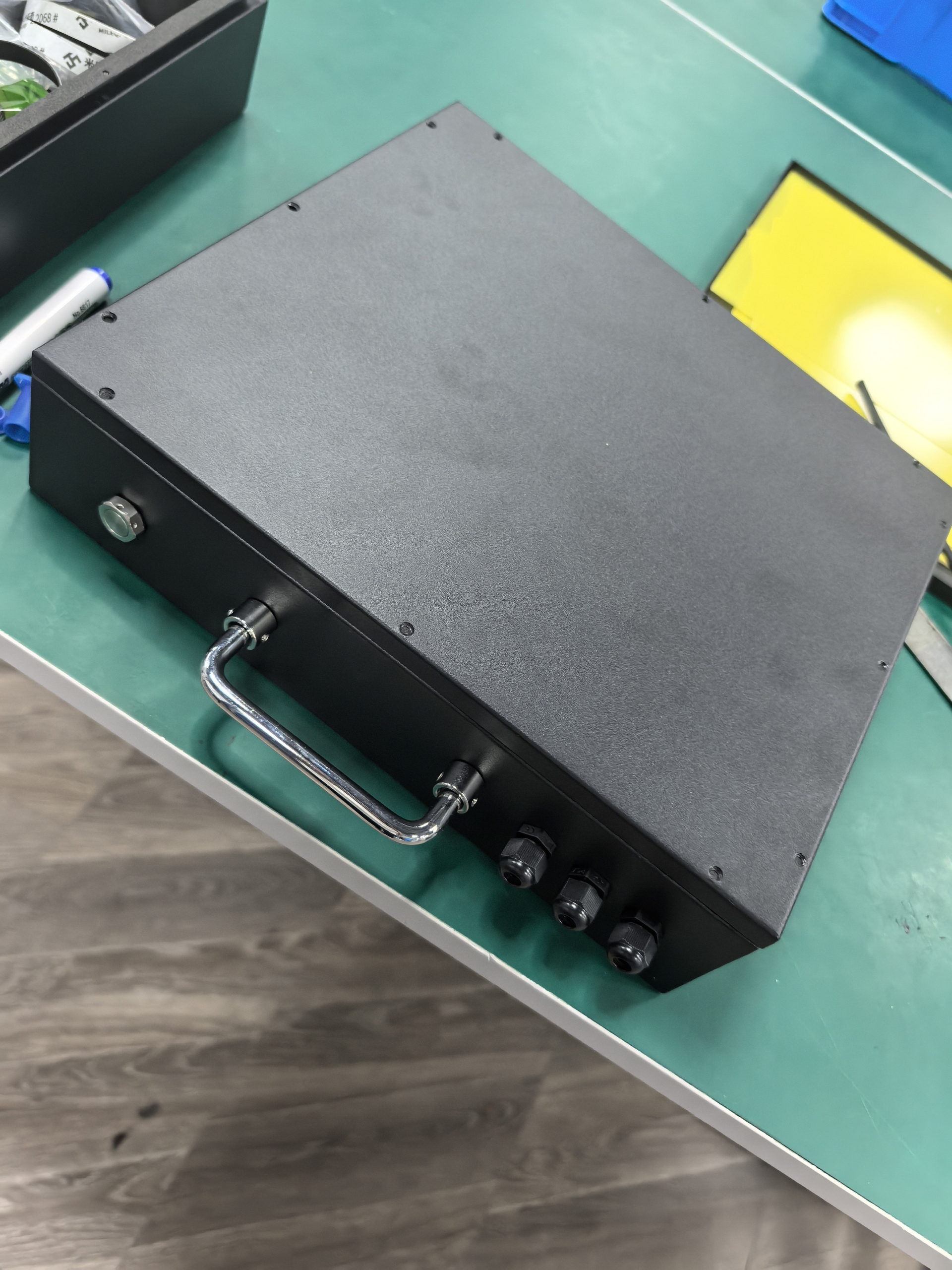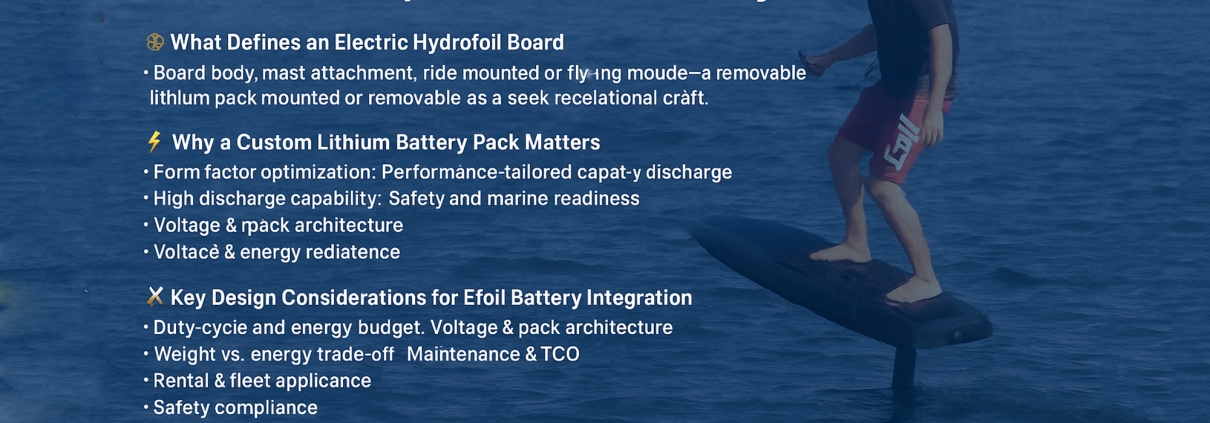Riding Above the Surface: Custom Lithium Powerpacks for Electric Hydrofoil Boards
As watersports innovation surges, electric hydrofoil boards (also known as efoils) have emerged as a major growth segment. These devices allow riders to “fly” above the water surface, combining a foil wing, motor drive and lithium battery pack into a sleek recreational craft. The battery pack in this system is far more than a commodity — it’s a core differentiator in ride time, performance, packaging and safety.
For OEMs and system integrators, designing a custom lithium battery pack tailored to the board’s mechanical, electrical and operational demands is essential. In this article, we explore how custom lithium battery systems enable the next generation of efoil boards, what design criteria matter, and how manufacturers can build smarter power systems for the water sports industry.
⚙️ What Defines an Electric Hydrofoil Board?
An electric hydrofoil board typically comprises a board body, mast and foil wing assembly that lifts the craft as speed increases, a controller and motor driving a propeller, and a battery pack mounted into the board or removable as a module.
The user remains standing on the board, controlling throttle (often via remote) while the foils lift the platform above water, reducing drag and enabling high efficiency. Some efoil boards operate for 60–90 minutes in flying mode. In this context, the battery’s role is not only to supply energy but to optimize weight, safety, thermal management and mechanical integration.
🔋 Why a Custom Lithium Battery Pack Matters
- 📦 Form factor optimization: The board’s hull, mast attachment, and removable battery compartments demand specific shapes and fixings. A custom pack can fit perfectly within the board or attach unobtrusively.
- ⚡ Performance-tailored capacity and discharge: Ride time, acceleration, and motor power demand must align with battery output. For instance, many boards use 64.8 V packs rated at 1.6–1.9 kWh.
- 🏄 High discharge capability: Instant thrust during takeoff and sustained drive during foil lift require high-rate discharge design and low internal resistance.
- 🌊 Safety and marine readiness: Water sports demand splash resistance, vibration tolerance, and certification (UN38.3, CE). PKNERGY marine-grade packs feature sealed housings and rugged structures.
- 🚀 Brand differentiation: OEMs offering a flagship power system gain marketing advantages such as “premium ride time” and “smart marine battery” positioning.
🔧 Key Design Considerations for Efoil Battery Integration
- 📈 Duty-cycle and energy budget: Define expected ride time, speed profiles, rider weight, and battery degradation over time.
- 🔋 Voltage and pack architecture: Typical efoil systems adopt 48V–64.8V for optimal motor efficiency and lightweight design.
- ⚖️ Weight vs. energy trade-off: Heavier packs affect foil lift and maneuverability; optimizing cell type and enclosure weight is critical.
- 🌡️ Thermal & mechanical resilience: Handle marine humidity, discharge peaks, and cycles with robust BMS integration.
- 🔌 Recharge and serviceability: For fleet/rental operations, design packs for easy swap or quick charging, minimizing downtime.
🌍 Business & Market Implications
- 💰 Ride time = consumer value: Longer flight time (60 min vs. 30 min) directly boosts perceived value.
- 🔧 Maintenance & TCO: Durable packs reduce aftermarket costs and downtime, improving user satisfaction.
- 🏖️ Rental & fleet applications: Resorts benefit from quick-swap, consistent, safe battery systems.
- 🧯 Safety compliance: Certified UN38.3-tested packs build trust in marine and export markets.
⚠️ Challenges & Risk Mitigation
- 📦 Supply chain pressure: Custom packs require cell sourcing and specialized assembly.
- 🔋 Degradation & lifecycle: Predicting capacity fade and designing with margin is vital.
- 🌊 Environmental exposure: Splash, humidity, and saltwater impact performance — sealed modules prevent damage.
- 🔧 Operational logistics: For fleets, ensure proper battery swap management and monitoring systems.
✅ Conclusion
Electric hydrofoil boards represent a fast-growing water sports category blending lift dynamics, propulsion, and smart energy design. At the heart of that innovation lies the lithium battery pack. By developing a custom power system optimized for weight, capacity, and marine resilience, manufacturers can unlock superior ride time, safety, and customer satisfaction.
In this competitive space, every minute of flight and every kilogram of battery weight counts. PKNERGY empowers OEMs to create future-ready, high-performance energy systems for electric hydrofoil boards.
📩 Contact Information
Cassie | PKNERGY Energy Co., Ltd.
Email: sale4@pknergy.com
WhatsApp/Tel: +86 13974604556
🌐 Website: https://pknergypower.com





